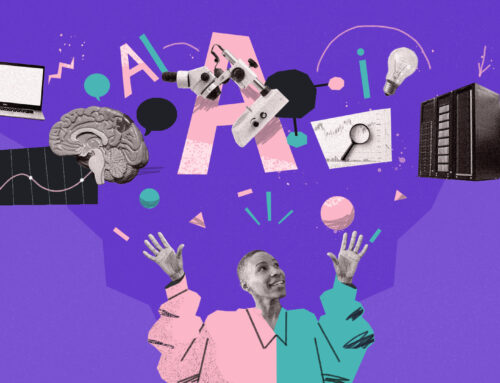Ever wondered how to get the best results from AI? Whether you’re working with text, images, or code, creating the right prompt is key. A prompt engineer helps guide the AI model to give the perfect output. In this article, we’ll talk about the best practices in prompt engineering, how to structure your input to get the desired output, and how to use natural language effectively. We’ll also explain how the language model works and why the format of your prompt matters. Plus, we’ll show you how to refine your prompts for even better results. Ready to learn the Best Prompt Engineering Practices? Let’s dive in!
Crafting Clear and Specific Prompts
Crafting clear and specific prompts is really important in prompt engineering, especially when working with large language models like GPT and ChatGPT. When you create good prompts, you’re not just asking a question, but guiding the AI to understand exactly what you want. This is where the art of prompt engineering becomes useful. Let’s go over some simple tips:
1. Tailor Your Prompts
To get the best results from chatbots and AI tools, it’s important to tailor your prompts to your specific needs. Think about what exactly you want the AI to do, and ask clearly. For example, instead of asking “Tell me about animals,” you could say, “Can you list five interesting facts about elephants?” This helps the model focus on what you really need.
2. Use a Chain of Thought
When you’re working with LLMs, it’s useful to ask the model to think step by step, creating a chain of thought. For example, you can prompt it like, “Explain why climate change is a problem and give three reasons.” This helps the AI explain better and give more complete answers.
3. Explore Few-Shot and Fine-Tuning
In prompt engineering, you can also try using methods like few-shot prompting and fine-tuning to improve your results. Few-shot prompting means showing the AI a couple of examples before asking your main question. Fine-tuning means adjusting the AI’s responses using specific data. These techniques make tools like ChatGPT more effective, especially in natural language processing tasks.
By following these best prompt engineering practices, you can make your interactions with LLMs better, ensuring the AI gives you responses that are more useful and targeted. Prompt engineering is the process of refining how we talk to AI, and it’s becoming a key skill in today’s technology-driven world.
“Clarity is the starting point of all success.”

What Techniques Can Improve the Quality of Outputs from Generative AI Models?
When it comes to generating high-quality outputs from AI models, the prompt you provide is crucial. A well-crafted prompt can make the difference between a brilliant result and a confusing one. Using prompt engineering techniques and following the best prompt engineering practices can help you achieve better results.
Be Specific: The more specific your query is, the more likely the AI system will provide the desired output. For example, when using text models like OpenAI, include the desired tone, structure, and context. For image models, describe the visual elements such as color and composition to guide the AI better. This is one of the key prompt engineering tips to keep in mind.
Iterative Refinement: Sometimes, you won’t get the perfect result on the first try. Refining your prompt based on feedback from the AI’s output is essential to getting closer to the desired result. Iterating over the prompt helps ensure the model’s response improves, as per the best practices in prompt engineering.
Domain-Specific Fine-Tuning: If you’re working on something related to a specific field, using a generative AI model that has been fine-tuned with domain-specific data can lead to more relevant and accurate outputs. This is a technique often recommended in 10 prompt engineering best practices.
Effective prompt engineering works by combining clarity, specificity, and iteration. These techniques can summarize or improve any generative AI model’s output. For more prompt engineering tips and guidance, many resources like help centers and APIs are available to help you better understand how to guide the AI and ensure the model’s performance meets your expectations. Keep these Best Prompt Engineering Practices in mind for superior results.
Here’s what Darryl Stevens, Founder and CEO of Digitech Web Design, says about improving the quality of AI outputs:
“To improve the quality of outputs from generative AI models, one key technique is refining the prompt. Be specific and detailed about the desired result—include context, tone, and structure when working with text models or visual elements when working with image generators. Additionally, iterative refinement through feedback loops helps align outputs more closely with the expected result. Fine-tuning models with domain-specific data can also enhance relevance and accuracy.”
Kayden Roberts, Chief Marketing Officer at CamGo, adds:
“Prompt engineering is both an art and a science that optimizes outputs from generative AI models. One effective technique is iterative refinement—starting with a simple prompt and gradually adding specificity to guide the model toward the desired output. This method allows you to nudge the AI while keeping room for creativity.”
Kate Ross, Hair and Beauty Specialist at Irresistible Me, shares her experience:
“One technique we’ve found useful is being as specific as possible with our prompts. The clearer and more detailed the prompt, the better the output. For example, when generating text for marketing campaigns, we include specific details about tone, audience, and the message we want to convey.”
How Does Prompt Engineering Differ Across Various AI Applications (Text, Image, Code)?
Prompt engineering isn’t a one-size-fits-all process. It varies depending on whether you are working with text, image, or code generation. Each requires a slightly different approach to ensure you’re guiding the AI in the right way.
- Text Generation: For AI models that create text, like GPT, it’s essential to include details like context, tone, and audience. The more guidance you give, the more focused and coherent the text will be.
- Image Generation: Image generation models require a focus on visual details. Describing colors, object placement, and style can drastically change the outcome of the image. You need to be clear about what you want visually.
- Code Generation: When using AI to generate code, precision is critical. The prompt must include the exact programming language, functionality, and logic flow. Vague prompts will often result in non-functional or incorrect code.
Darryl Stevens explains it well:
“Prompt engineering varies across different AI applications based on the nature of the task. For text generation, prompts require detailed context, tone, and content style to yield coherent narratives. In image generation, prompts must focus on descriptive attributes like color, object placement, and style to control the visual output. Code generation, on the other hand, demands precision in syntax and logical structure to ensure functional outputs, with prompts specifying the programming language, functionality, and logic flow.”
Kayden Roberts also highlights the differences:
“The differences in prompt engineering across AI applications (text, image, code) lie primarily in the level of precision required. With text, prompts benefit from more flexibility, allowing the model to generate various responses. In image generation, though, prompts must be more specific, as visual elements like colors, shapes, and styles can vary significantly. For AI-generated code, the language must be exact—code prompts must specify the task and any limitations or programming languages to avoid incorrect outputs.”
Kate Ross shares her perspective:
“The approach to prompt engineering does vary depending on the application. For text, it’s about clarity and context—providing enough detail to get the desired result. For images, it’s more about describing visual elements accurately. When it comes to code, the focus is on being precise about what you want the code to do.”
What Are the Limitations of Current Prompt Engineering Methods?
While prompt engineering can greatly enhance the quality of AI outputs, it’s not without its limitations. These challenges include handling ambiguity, maintaining long-term context, and avoiding bias.
- Ambiguity: Sometimes, even a well-crafted prompt can be interpreted differently by the AI, leading to unexpected results. Vague or underspecified instructions often produce low-quality outputs.
- Context Retention: For tasks that require long-term memory, such as writing lengthy articles or generating complex code, current models sometimes struggle to keep track of all the details, leading to inconsistencies.
- Bias in Data: AI models are trained on existing data, which can sometimes carry bias. If the data is skewed, the AI’s output may reflect this, making it difficult to achieve neutral or balanced results.
Darryl Stevens comments on this limitation:
“Current prompt engineering methods often face challenges such as ambiguity in prompts, where vague or underspecified instructions can result in poor outputs. Long-term context retention is also a challenge for some models, leading to inconsistencies in complex tasks. Another limitation is the reliance on pre-existing training data, which can introduce bias or generate outdated information. Crafting effective prompts can also require significant expertise, making it less accessible for non-experts and time-consuming for larger, more complex outputs.”
Kayden Roberts adds:
“One major challenge is that models can still produce hallucinations or inaccurate outputs, especially when the prompts are too open-ended. Bias in data can lead to skewed results, making it difficult to get neutral or diverse responses. Despite these limitations, the field is rapidly evolving, and refining prompts based on context and feedback remains one of the most powerful tools for improving AI outputs.”
Finally, Kate Ross notes:
“One of the main limitations is that even with well-crafted prompts, the output can sometimes be unpredictable. There’s also the challenge of needing deep domain knowledge to create effective prompts, especially for complex tasks.”
Guiding AI with Real-Life Scenarios for Best Prompt Engineering Practices
Guiding AI with Real-Life Scenarios is an effective method to enhance prompt engineering practices. By incorporating examples that relate to real-life situations, you can improve the relevance and accuracy of AI outputs. When you use a specific prompt, it helps the model understand the context better, which leads to better responses. For instance, instead of asking a general question, a prompt could include scenarios like “In data analysis for a marketing campaign, how would you track customer engagement?” This way, you help the model understand what you are looking for, increasing the chances of producing desired outputs.
Additionally, it’s essential to consider prompt engineering as a whole. By exploring various use cases, you can see how different approaches can yield different results. When using a prompt engineering guide, think about how you can structure your questions to guide the AI towards specific outcomes. Techniques like chain of thought prompting can be particularly useful here, as they encourage the model to think step-by-step, ensuring the AI addresses complex inquiries effectively. This approach can improve the quality of the responses and make them more actionable.
Moreover, employing strategies such as zero-shot learning can unlock the full potential of AI. This method allows models to respond to prompts without needing extensive training on similar tasks. It’s vital to ensure the AI has a clear level of detail in the prompt so it can generate domain-specific insights. When your prompts are well-crafted, you not only facilitate better communication with AI but also maximize its effectiveness. Overall, integrating these principles into your best prompt engineering practices will lead to more productive interactions with AI and more insightful outcomes.
Understanding AI Limitations
Understanding AI Limitations is crucial for anyone wanting to get better at best prompt engineering practices. AI, especially large language models (LLMs), has made significant advancements, but they still have limitations. When you use prompts for AI, it’s essential to set realistic expectations about what these models can do. For example, while they can assist in content creation and answer many questions, they may sometimes miss important details or specific contexts. That’s why being clear and specific with your prompts is very important; it helps the AI understand your request, leading to more accurate answers.
To ensure that AI models produce desired outputs, keep these tips to get the best results in mind:
- Be Clear and Specific: Make sure your prompts are straightforward and easy to understand. If you ask the AI to summarize something, tell it what key points you want it to focus on, especially if you need a summary.
- Iterative Approach: Sometimes, you may not get the answer you want on the first try. Crafting prompts can be an iterative process; changing your prompts step by step can improve the responses, particularly useful for complex queries.
- Contextual Relevance: Providing background information or context in your prompts helps the AI to understand the context better. This is essential for reducing the likelihood of misinterpretation and improving the relevance and accuracy of the answer.
By using these strategies, you can guide AI models to produce desired results more effectively, making your work with them more productive and enjoyable. Understanding the craft of designing prompts will not only help you in your projects but also enhance your overall experience with AI.


